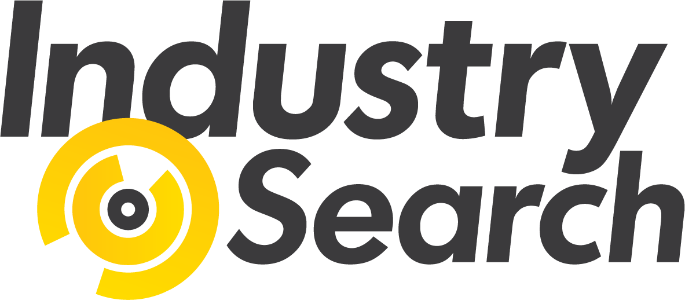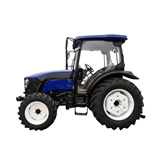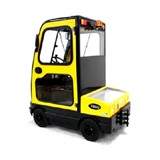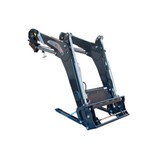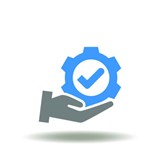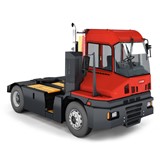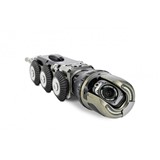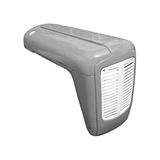Buying a crawler tractor in Australia? Discover price ranges, hidden costs, expert advice, and must-know compliance rules before you invest.
Key takeaways
- Crawler tractor prices in Australia typically range from $80,000 to over $650,000, depending on size, brand, and features.
- Compact crawler tractors (50-100 HP) for farm or small civil projects start from $80,000 to $180,000.
- Mid-range units (100-200 HP) for construction and land clearing are generally priced between $180,000 and $350,000.
- Heavy-duty crawler tractors (200+ HP) for mining and infrastructure projects can cost $400,000 to $650,000+.
- Used crawler tractors provide significant savings, priced from $40,000, but condition and service history matter.
- Financing options can include chattel mortgages, equipment leasing, or government-backed asset finance, often with terms from 3-7 years.
- Regular maintenance costs average $10,000 - $25,000 per year, depending on use.
- All crawler tractors must meet Australian Design Rules (ADR) and Work Health and Safety (WHS) regulations.
Introduction
Whether you're managing a large-scale civil project, expanding a farming operation, or upgrading equipment for land development, buying a crawler tractor in Australia is a major investment. Known for their stability, traction, and pushing power, crawler tractors are indispensable across industries from agriculture to mining.
This guide will help you make a well-informed purchasing decision. It covers pricing, types, operational considerations, financing, maintenance, compliance, and more—tailored specifically for the Australian market.
Types of crawler tractors
Understanding the types available will help you align the machine to your needs:
1. Agricultural crawler tractors
- Designed for farm work with low ground pressure and minimal soil compaction.
- HP Range: 50-150 HP
2. Construction-grade crawler tractors (Dozers)
- Heavy-duty for grading, site prep, and land clearing.
- HP Range: 100-350 HP
3. Forestry and mining crawler tractors
- Reinforced for rough terrain, high-torque work, often with ROPS/FOPS cabins.
- HP Range: 200-600+ HP
4. Special-purpose crawler tractors
- For pipeline work, swamp conditions, or snow.
- May include track modifications and winches.
Crawler tractor prices in Australia
Prices vary significantly depending on brand, horsepower, attachments, and condition:
Crawler tractor prices vary based on size, horsepower, and condition. Here’s a breakdown to guide your budgeting:
- Compact models (50–100 HP):
- New units are typically priced between $80,000 and $180,000.
- Used options generally range from $40,000 to $90,000, depending on hours, service history, and brand.
- Mid-range models (100–200 HP):
- New models fall between $180,000 and $350,000.
- Used machines usually cost $100,000 to $200,000, depending on configuration and usage.
- Heavy-duty models (200+ HP):
- New equipment ranges from $400,000 to $650,000 or more for top-tier units.
- Used options are available from $180,000 to $450,000, though pricing can vary based on maintenance, attachments, and brand value.
Operation and key considerations
Power and pushing capacity
- Choose the HP based on terrain, load, and typical job site conditions.
Track system
- Steel tracks: Better for harsh terrain and durability.
- Rubber tracks: Quieter and cause less surface damage (ideal for farming).
Attachments and add-ons
- Rippers, blades, winches, GPS systems, enclosed cabins.
Fuel efficiency
- Expect usage of 10-40 litres per hour depending on machine size and job.
Maintenance and spare parts
Routine maintenance checklist
- Daily: Track tension, hydraulic fluid, engine oil.
- Weekly: Filter checks, coolant level.
- Quarterly: Undercarriage inspection, torque tests.
Annual maintenance cost
- Compact models: ~$10,000/year
- Mid-range models: ~$15,000/year
- Heavy-duty: $20,000 - $25,000/year
Spare parts availability
- Using OEM parts ensures compliance and warranty coverage.
Financing options in Australia
Chattel mortgage
- You own the asset outright.
- GST claimable upfront if GST registered.
Finance lease
- Lower upfront costs, but the lender retains ownership.
- Can be more flexible for seasonal cash flow.
Equipment loan comparison
When financing a crawler tractor in Australia, here’s how the two most common options compare:
-
Chattel mortgage:
- Average interest rates typically range from 6.5% to 9.5%.
- Loan terms are usually between 3 to 7 years.
- Tax benefits include claiming the GST upfront (if you're GST-registered) and depreciation over the asset’s life.
- Finance lease:
- Average interest rates range from 7% to 11%.
- Lease terms are generally 3 to 5 years.
- Tax benefits include the ability to claim lease payments as operating expenses, which can assist with cash flow and reduce taxable income.
To explore flexible, fast, and competitive financing tailored for crawler tractor, check out Easy Asset Finance. Their expert team can help you secure the best terms to preserve your cash flow and grow your business.
Warranty and service agreements
Standard warranties
- Most major brands offer 2 years or 2,000 hours.
Extended warranty options
- Can cover up to 5 years or 10,000 hours.
- Cost: Usually 5% - 10% of machine value.
Service plans
- Consider OEM service contracts with scheduled servicing included to control costs.
Compliance and certification in Australia
Safety and regulation standards
- Must meet ADR and WHS regulations, including:
- Roll-over Protective Structures (ROPS)
- Falling Object Protective Structures (FOPS)
- Noise and vibration controls
Operator certification
- Operators must be licensed under High Risk Work Licences in some states.
Environmental compliance
- Must comply with Tier 4 final / EU Stage V emission standards if imported new.
- Check with Australian Border Force (ABF) on import duties and quarantine requirements.
New vs used crawler tractors: What’s right for you?
Choosing between a new or used crawler tractor comes down to your project demands, budget, and long-term strategy. Here's how to decide what’s best for your operation:
- Buy new if:
- You require maximum uptime and reliability with the backing of a full manufacturer’s warranty.
- Your business plans to use the machine for 7+ years, making the higher upfront cost more viable through long-term ROI.
- You want access to the latest technology, fuel efficiency, and emissions compliance (e.g. Tier 4 Final engines).
- You're after easier financing approvals and better rates, as lenders often view new equipment as lower risk.
- Buy used if:
- You're looking to minimise upfront capital outlay or need a machine for short- to medium-term use.
- You’re confident in assessing machine condition or have access to a trusted equipment inspector.
- You’re buying from a reputable Australian dealer who provides service history and warranty options.
Before purchasing a used crawler tractor, always check:
- Hour meter accuracy — compare logged hours to wear and condition.
- Undercarriage wear — tracks, rollers, and sprockets are expensive to replace.
- Maintenance records — confirm regular servicing and any past repairs.
- Signs of hard use or corrosion — especially on ex-rental or ex-mining units.
Frequently asked questions
How do I choose the right crawler tractor size?
- Consider job type, terrain, and whether you need attachments.
- For farm use: under 150 HP.
- For construction: 150-350 HP.
- For mining or infrastructure: 350+ HP.
Are used crawler tractors a good investment?
- Yes, if they come with a full service history, have undercarriage in good condition, and have OEM parts.
How long does a crawler tractor last?
- With proper maintenance, expect 10,000 - 20,000 operating hours.
Is it better to lease or buy?
- Lease if your cash flow is seasonal or project-based.
- Buy if you plan long-term use and want depreciation benefits.
Final thoughts
Investing in a crawler tractor in Australia is a high-stakes but necessary decision for many operators across agriculture, mining, and construction. By understanding the price ranges, operational needs, compliance requirements, and financing options available, you can make a well-informed and cost-effective choice.
For long-term success, always prioritise total cost of ownership—not just the sticker price—and ensure you stay compliant with Australian safety and environmental regulations.
